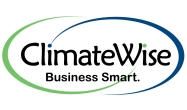Continue your efforts to avoid unnecessary purchases, minimize trash, using green transportation, and eating sustainably, while adding in energy conservation. If you haven’t started yet, it’s not too late to jump in!
If you haven’t registered, you can go to http://noimpactproject.org/experiment/ and click on the City of Fort Collins link on the left. You will not be able to open the link to the guide that they email you from work, so I’ve attached the section for Tuesday (transportation). You should be able to access the guide from a home computer, or you can forward this message to your personal email if you want access to it from home. Please don’t print it unless you really need to.

Energy Conservation Tips:
- Turn off the lights when you aren’t in the room. This is simple, but it makes a difference!
- Wash clothes on cold and use a detergent that works well on cold.
- Dry clothes on a line or drying rack instead of using the dryer.
- Prevent energy loss in your house. Check for leaks around windows, doors and from your fire place if you have one. Make sure your house is well insulated. Having a home energy audit is a great way to find problem areas.
- Purchase energy efficient appliances when older models die.
- Plug multiple appliances into a single power strip and turn it off when they are not in use.
- Home Energy Tip: Try a programmable thermostat
Heating and cooling accounts for almost half your energy bill – about $1,000 a year! A programmable thermostat is one of the easiest ways you can save energy in your home and help reduce carbon pollution. An Energy Star qualified programmable thermostat helps make it easy for you to save by offering four pre-programmed settings to regulate your home’s temperature in both summer and winter – when you are asleep or away.
Learn more about saving energy at home: http://www.energystar.gov/index.cfm?c=products.pr_save_energy_at_home - Check Out Energy Star’s Save Energy at Home tool to save money and reduce carbon pollution
Energy Star’s Save Energy at Home Tool can guide you in making your home more energy efficient — whether you do it yourself or hire a qualified professional. The online tool has tips for saving energy all around your home and targets each room individually. Remember, when you save energy, you’re saving money and cutting carbon pollution.
Try the tool: http://www.energystar.gov/index.cfm?fuseaction=popuptool.atHome
Below are links to additional information on Energy Conservation and Green Energy.
- The City of Fort Collins Utilities has great information on efficiency and rebates! http://www.fcgov.com/utilities/residential/conserve There is a lot of information about the rebates and discounted price of energy efficient lighting on the website and on the Energy poster (attached)
- Request that your home electricity come from Windsource (Excel Energy Customers): http://www.xcelenergy.com/Save_Money_&_Energy/Residential/Renewable_Energy_Programs/Windsource_for_Residences_-_CO
- Have a home efficiency audit subsidized by the City of Fort Collins: http://www.fcgov.com/utilities/residential/conserve/energy-efficiency/home-efficiency-program/audits (there are generally coupons for $10 off the audit in the Valpak coupon mailers or online). Once you have had an audit, you can receive rebates from the City on certain energy efficiency improvements if you use one of their participating contractors.
- EPA: How can I reduce my impact: http://www.epa.gov/cleanenergy/energy-and-you/reduce.html
- Find out where your power comes from with EPAs Power Profiler: http://oaspub.epa.gov/powpro/ept_pack.charts





